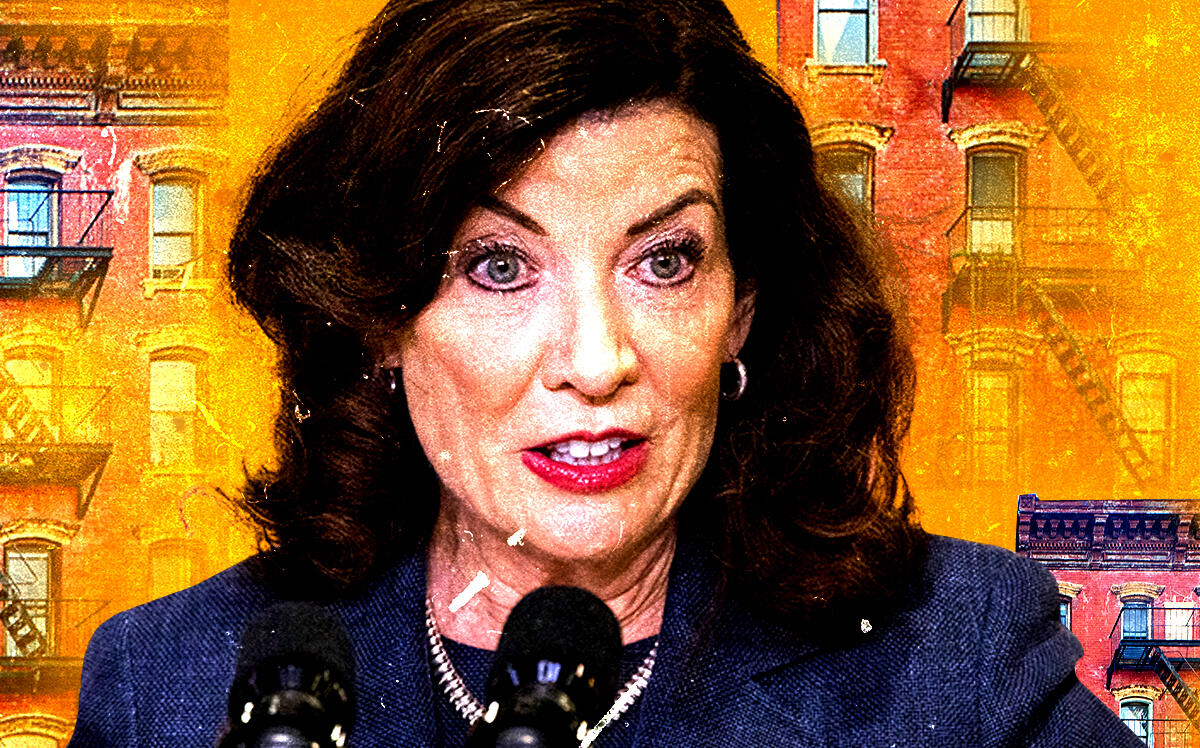There is an axiom in housing policy — or really, all public policy — that if there is a loophole, someone will exploit it.
Consider California, where environmental concerns have been used, successfully or not, to block housing projects by citing noise made by college students or the potential displacement of mountain lions on land that was already largely developed with single-family mansions.
The effectiveness of the state’s pro-development “builder’s remedy” law, which has been on the books since the 1990s but is only now being put to the test, could be blunted by delays and other complications wrought by California’s Environmental Quality Act.
New York appears to have taken note. Under Gov. Kathy Hochul’s California-style proposal that would allow developers to bypass zoning rules in localities that fail to meet housing production goals, projects that qualify for fast-track approval would be exempt from environmental review (though still subject to existing regulations over things like carbon emissions or brownfield remediation).
Such an exemption could go a long way in streamlining the onerous review process that projects face in New York City. But as lawmakers begin to debate the governor’s budget proposals, housing proponents are already asking whether the policy will have enough teeth.
“There will be loopholes, they will be found, and then the question is, what does the state do about it?” said Noah Kazis, an assistant professor at Michigan Law who has written extensively about housing and land use issues.
State engagement with communities will be key to the policy’s success, he said. There is some acknowledgement of this in Hochul’s proposed budget, which includes $4 million to create a new office within the state’s housing agency that would work with localities to meet their housing targets.
But Annemarie Gray, executive director of the pro-housing group Open New York, believes the proposal needs stronger enforcement mechanisms. Her group is pushing for provisions that would fine localities for failing to meet their housing targets and allow nonprofits to bring lawsuits against local governments. Pro-development nonprofits have already filed 12 lawsuits against cities in the Bay Area to prove that they have shirked their housing responsibilities, and they say more suits are coming.
Hochul’s proposal would set a timeframe — 120 days — for localities to deliberate on fast-track project applications — and establish an appeals process for rejected developers. The efficiency of that process will also play a major role in whether developers bother pursuing such projects.
“Due process is important, localities need to be able to weigh in, but at the same time, to delay is to deny,” said James Lloyd, director of policy at the New York State Association for Affordable Housing.
The governor’s proposal takes a different tact than other states by shying away from telling localities how to reach their housing goals. Whereas Oregon and California have largely done away with single-family zoning, Hochul’s proposal would allow localities to figure out what policies work for them, whether that means legalizing accessory dwelling units or approving rezonings to allow for higher density in specific areas. Localities can also use different combinations of those policies to buy more time to reach their housing goals.
Massachusetts’ “Comprehensive Permit Law,” better known as 40B, shows how loosening zoning regulations can meaningfully increase housing supply in communities resistant to new development. The policy, put in place in 1969, allows officials to approve housing projects with affordable housing even if they are not permitted by local zoning. Developers of such projects can appeal rejections to the state. The policy has “produced more affordable housing than any other housing program in the Commonwealth,” according to a 2014 report by the Citizens’ Housing & Planning Association, which found that it has led to the creation of more than 70,000 housing units.
Massachusetts’ policy also underscores that a builder’s remedy provision alone does not solve a state’s housing problem. According to the Boston Globe, Massachusetts builds about 17,000 housing units each year, but experts estimate that 200,000 will be needed by the end of the decade for home prices to stabilize.
“Is Massachusetts a state with very affordable housing? No. Is it easy to build a 40B project, no,” Kazis said. “It is clearly doing something important, but it is pretty far from perfect.”
Read more



